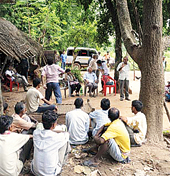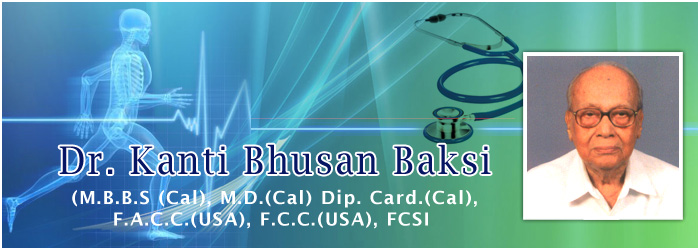 In the late 1990s, I was talking to Satyajit Ray in his residence about a request from the morning walkers’ club of Minto Park, Calcutta, for an article for their souvenir. As a cardiologist, I felt diffident about writing. But Ray encouraged me in his famous baritone, “Go ahead! I know you have ideas that will come out in due course.” So, I decided to write about my experiences of working with a voluntary rural healthcare organization — Vivekananda Swasthya Seva Sangha — formed in 1984 by a few medical and non-medical persons of the city to provide health support to underprivileged people of our villages. In the late 1990s, I was talking to Satyajit Ray in his residence about a request from the morning walkers’ club of Minto Park, Calcutta, for an article for their souvenir. As a cardiologist, I felt diffident about writing. But Ray encouraged me in his famous baritone, “Go ahead! I know you have ideas that will come out in due course.” So, I decided to write about my experiences of working with a voluntary rural healthcare organization — Vivekananda Swasthya Seva Sangha — formed in 1984 by a few medical and non-medical persons of the city to provide health support to underprivileged people of our villages.
“Morning walkers,” I began, “Have you ever thought of leaving the streets of the city and walk along the paths of the villages and witness what lies in rural India? We know 80 percent of our population live in our villages and 80 percent of our prosperity lies in urban areas.” Most surprisingly, on reading my piece, Ray commented, “I have got the idea for my next film.” This was how he began thinking about Uttaran (The Broken Journey). The doctor in the film abandons his conference, realizing that developments in science and technology are meaningless until they reach the poor and neglected segments of our rural population.
One of the most powerful arguments on this matter came from Vivekananda: “I consider the great National sin is the neglect of the masses, and that is one of the causes of our downfall. No amount of politics would be of any avail until the masses in India are once more well educated, well fed and well cared for. They pay for our education, they build our temples, but in return they get kicks.” Vivekananda mentioned another great sin: “the neglect of the womenfolk”. He concluded, “So long as millions live in hunger and ignorance I hold every man a traitor, who having been educated at their expense pays not the least heed to them.”
Our democracy has made us too dependent on our government. We talk about the power of the common people, but other than agitating and exercising our franchise, we seldom witness any long-term constructive roles played by the people. We emphasize our rights, without looking into our responsibilities. But our history recounts a different story. In the recent past too, development in diverse fields has been the initiative of the people. Schools, colleges, engineering colleges, universities, the medical colleges and hospitals of Calcutta, charitable dispensaries, water reservoirs in almost all villages, temples, mosques, gurdwaras, and even the Sahitya Parishad and the Indian Association for the Cultivation of Science have been created by the people. Reputed and established social welfare organizations like the Ramakrishna Mission and the Bharat Sevasram Sangha are being run successfully on peoples’ participation and donation. I cannot believe that we have lost that expanded vision for good. This enormous resource can be amplified if planned professionally and executed with selfless foresight.
Following Vivekananda, I would like to say that our present requirement is to rejuvenate and restructure the initiatives already taken by the people of Bengal. The financial and organizational aspects are the most perplexing hurdles for such a rejuvenation.
There are people in Bengal who have not only become self-sufficient but have also increased their income. Many villagers have become affluent too. Our cities have expanded, urbanizing quite a few of our villages. So, I presume that there are about 30 million people capable of contributing to these initiatives. If they contribute at least Rs 50 per head per month, the gross amount accumulated every month will be Rs 150 million. Add to this the corporate houses, wealthy Bengalis and NRI contributing at least 5 to 10 percent of their earnings, and the expected amount will be Rs 300 million per month. It can be used for empowering the poor through education, health, housing, self-reliance, peace and harmony.
We have four tasks. First, to remind people of their social obligations and responsibilities regarding the empowerment of the masses. Second, to form a professionally managed fundraising body, which will utilize this money judiciously, equitably and transparently. Third,the active involvement of respected individuals like artists, thinkers, the clergy and developmental professionals. Finally, the implementation of various government plans for rural development, strengthening public-private partnerships.
After his broken journey, Ray’s doctor landed on the hard ground of reality, and starts a new voyage from there. The success of this second journey depended entirely on the active accompaniment and participation of his fellow citizens. |


